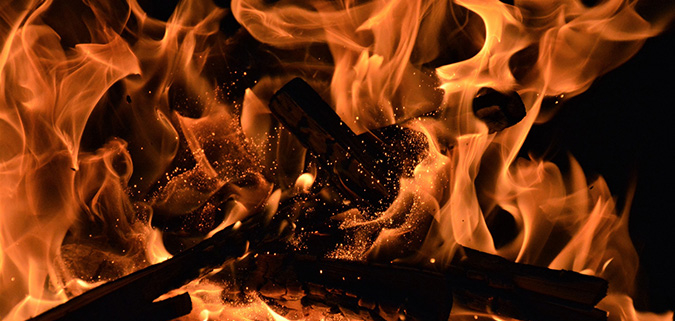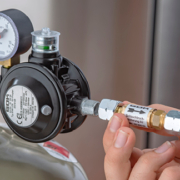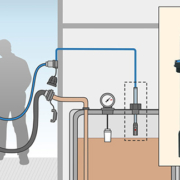What do I need a thermal cut-out device “T” (TAE) for?
It is one of the worst scenarios you can imagine: The company hall or the private building is in flames and the operator cannot shut off the gas supply. The fire inevitably is about to reach the LPG system; the extent and damage would be devastating, if there was an explosion. A thermal cut-out device prevents the uncontrolled gas escape from the downstream fittings and protects people and the system from major damage.
The thermal cut-out device “T”, for short: TAE, is used upstream of various fittings, such as ball valves and screw-in compression fittings, as well as pressure regulators. The TAE is sometimes integrated into the system components, but can also be installed individually in the line (see product examples at the end of the article).
Melting point
The TAE works as follows: At a temperature of approx. 100 degrees Celsius, a soldering material inside the fitting begins to melt. Once the soldering material has passed into the liquid state, a pre-tensioned closing taper then triggers and interrupts the gas supply.
With this mechanism, for example, the operator of a cylinder system can prevent gas from escaping if components of an LPG system melt due to a fire.
You are currently viewing a placeholder content from Youtube. To access the actual content, click the button below. Please note that doing so will share data with third-party providers.
Replacement after triggering
After the thermal cut-out device has tripped, the user must replace it. The closing taper cannot be re-tensioned afterwards.
Among other things, these products protect you from uncontrolled escape of gas, if, for example, a fire should break out:






